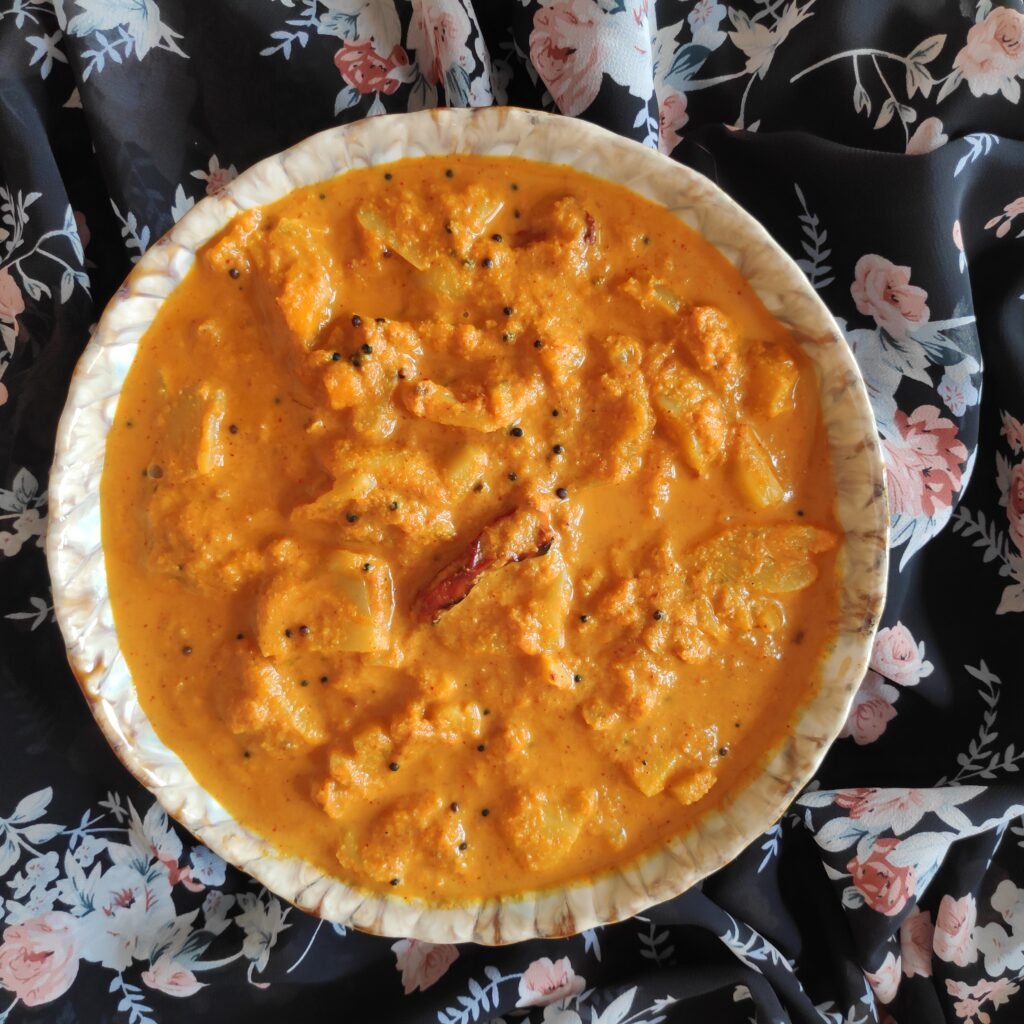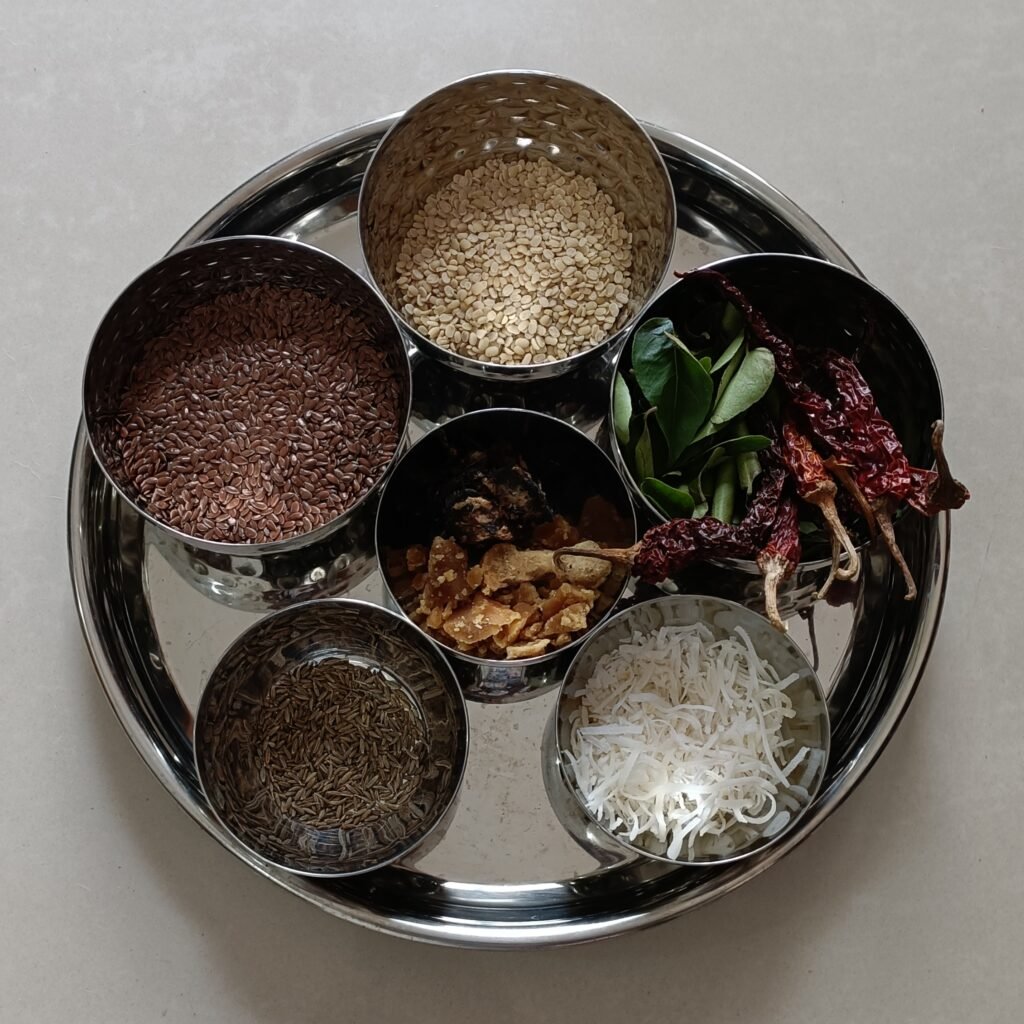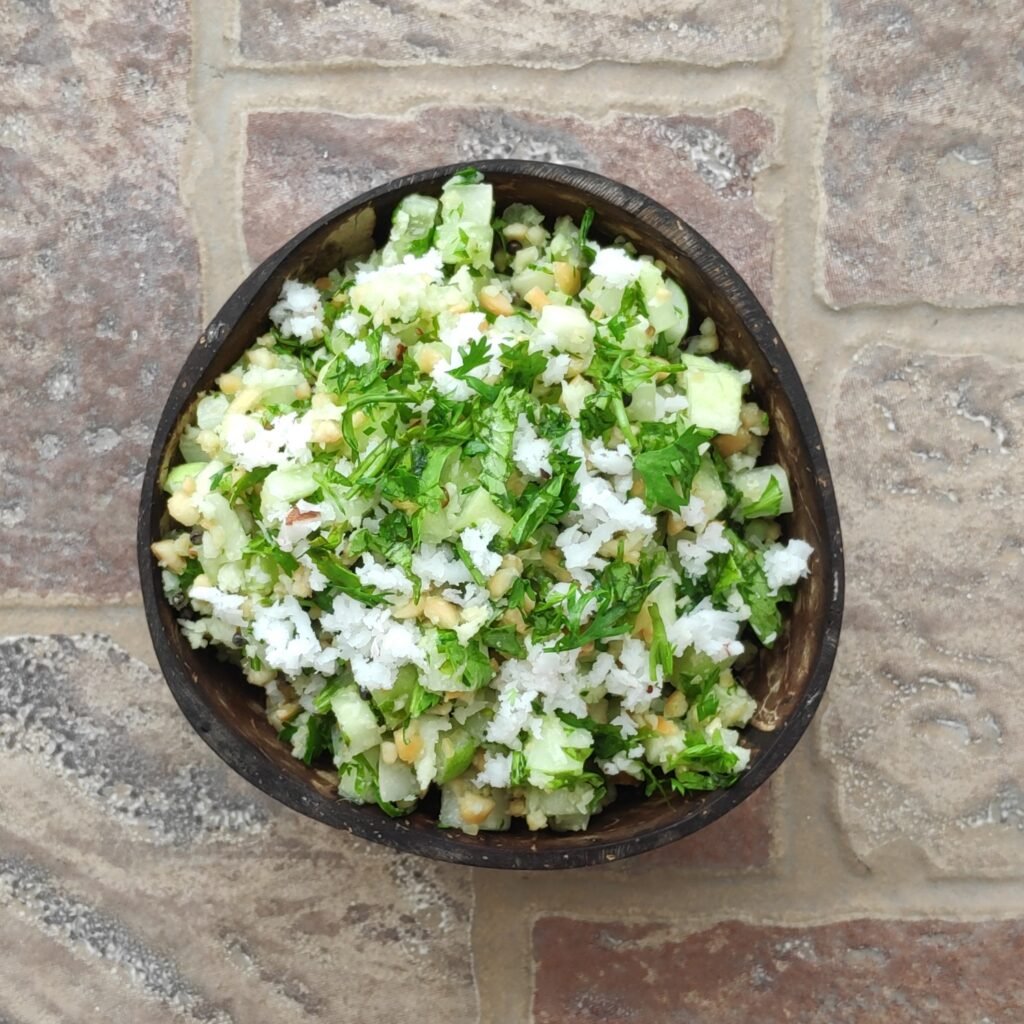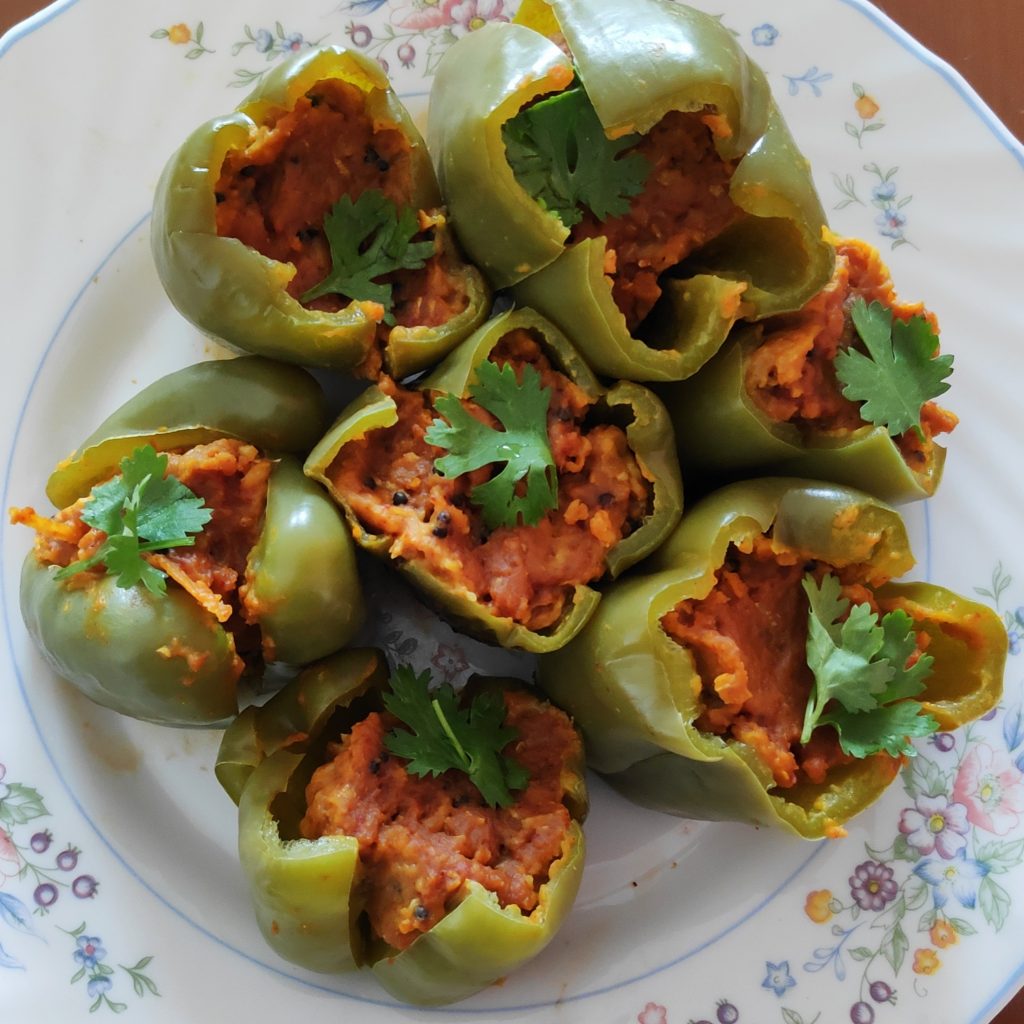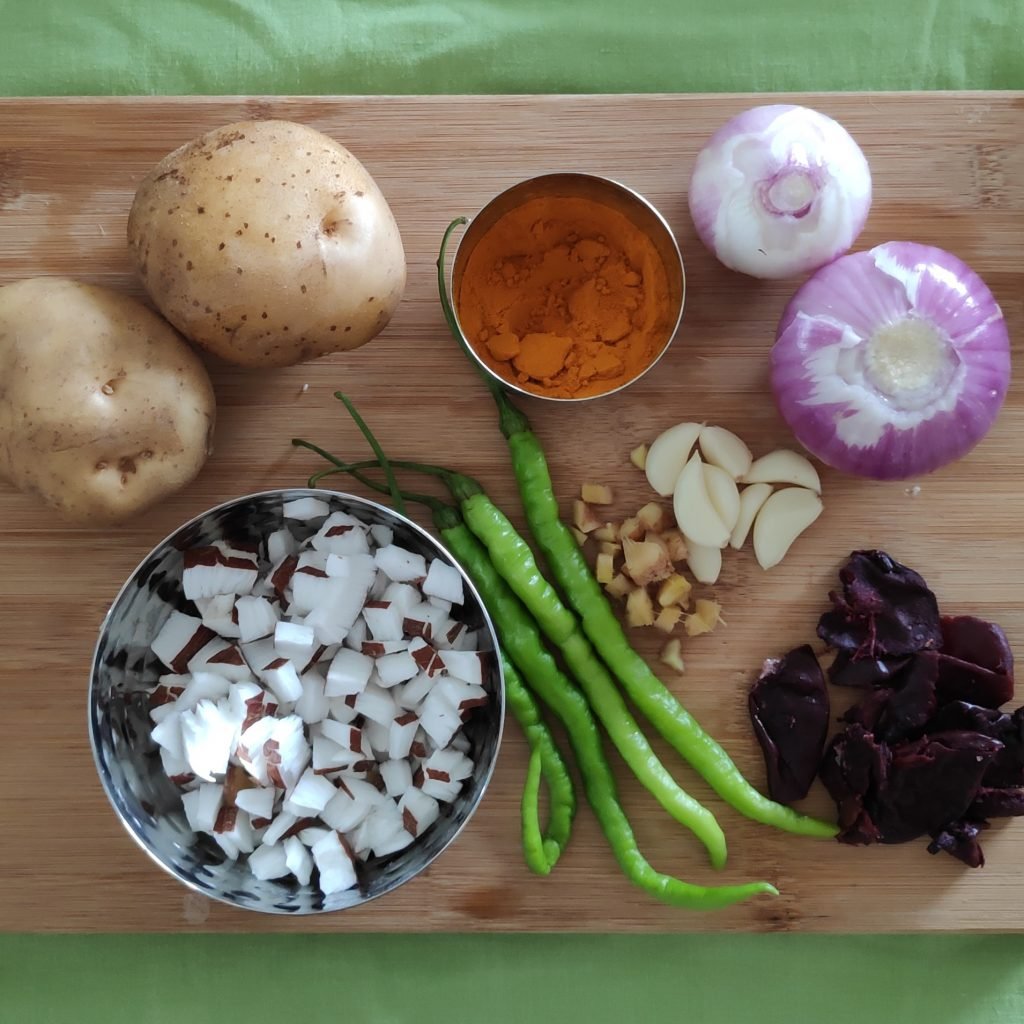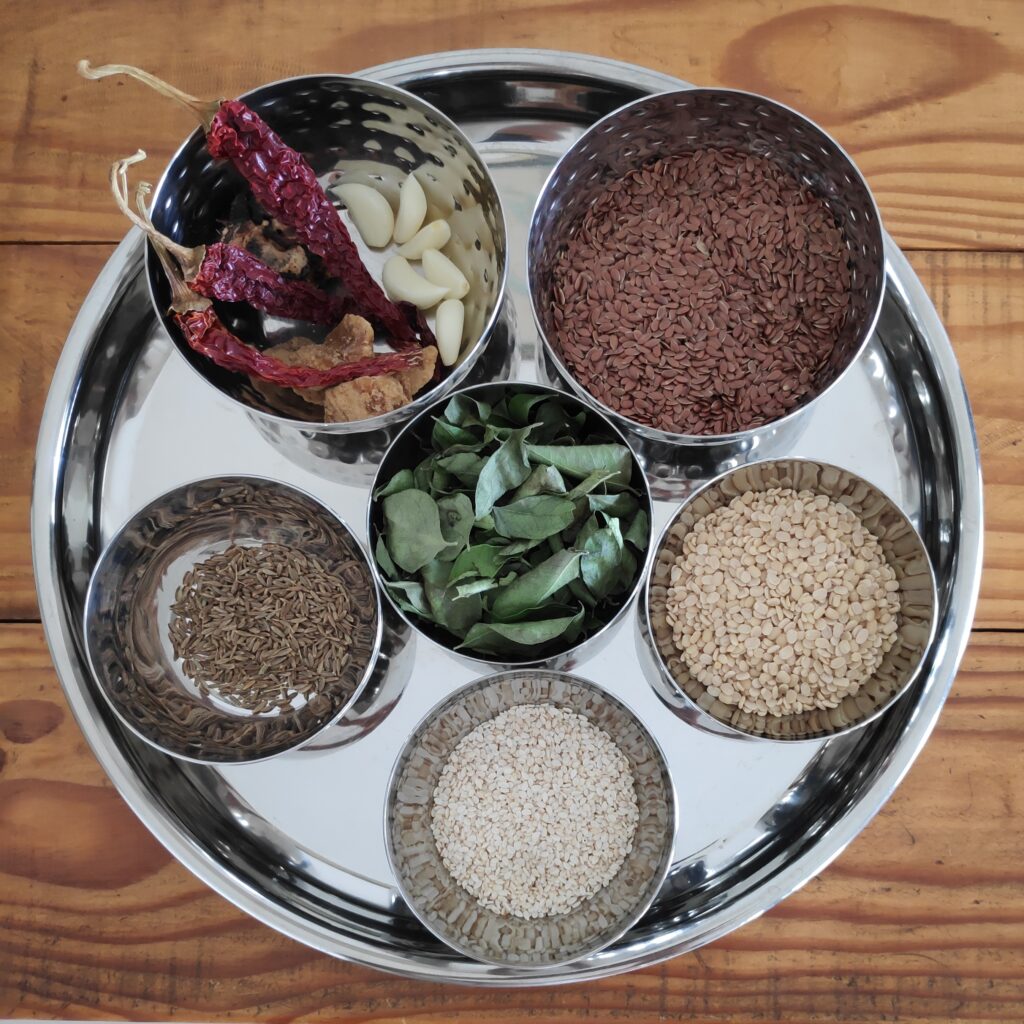
Alsi ki Chutney with Sesame Seeds (Flaxseed Chutney)
Flax seeds are tiny powerhouses of nutrition well known for their high content of omega-3 fatty acid alpha-linolenic acid (ALA), an essential fatty acid which means that your body cannot produce it and so you need to obtain it from the food you eat. It is important to grind the seeds before eating them as the oil is locked up inside the fibrous structure of the seed and it cannot be released when eaten whole.
Flax seeds also have high amounts of protein as well as soluble and insoluble fiber. Soluble fiber helps regulate blood sugar and cholesterol levels. It also promotes digestive health by feeding your beneficial gut bacteria. When mixed with water this soluble fiber becomes very thick and combined with the insoluble fiber content, flax seeds become a natural laxative, promoting good bowel movement, preventing constipation, and reducing your risk of diabetes. It’s recommended to drink plenty of water when eating these seeds because of their high fiber content. For people who are not used to eating a lot of fiber, incorporating flax seeds too quickly can cause mild digestive problems. These include bloating, gas, abdominal pain, and nausea. Chutneys are a great way to avoiding these problems as they are eaten along with a lot of other vegetables and pulses in our traditional Indian meals.

